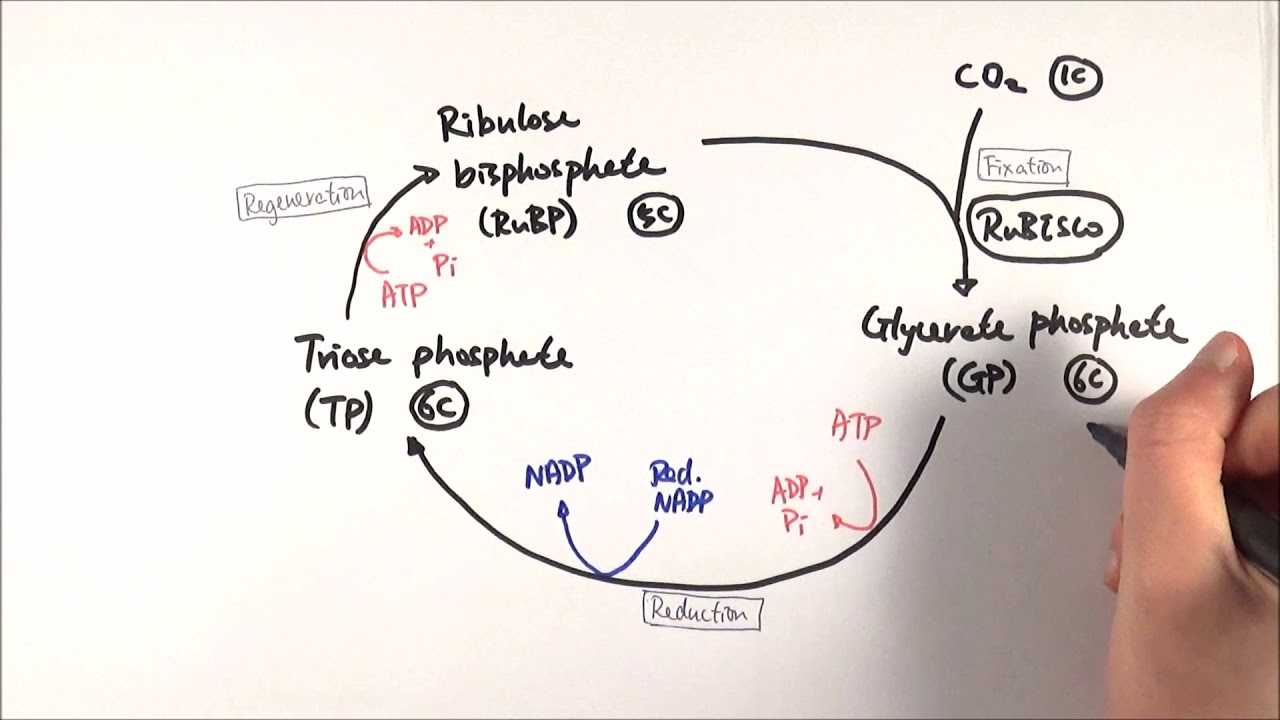The Calvin Cycle
What?
The Calvin Cycle is a light independent reaction.
Calvin’s cycle is the biological process that enables plants use ATP (as an energy source) and Reduced NADPH² to synthesise sugar. It also builds carbohydrates from smaller molecules.
How?

==not neccesary for QP==
Carbon dioxide enters the plants through the stomata of the leaves, where it is incorporated into a 5 carbon sugar, RuBP
RuBP (5C) is combined with carbon dioxide in a reaction called carbon fixation
It is then catalysed by the enzyme RUBISCO.
==There is an intermediate unstable stage where it is a== ==6 Carbon Sugar==
RuBP is converted into two GP molecules - 3C x 2
Reduced NADP and ATP are used to convert GP to TP
↳ The 2NADPH² delivers hydrogen and becomes 2NADP
↳ The ATP provides energy and becomes 2ADP + P
TP loses a carbon, exporting it to the cytoplasm to make glucose which is then converted to essential organic compounds such as polysaccharides, lipids, amino acids and nucleic acids.
Remaining TP molecules are used to make RuP, using the energy from ATP to reform RuBP.
What if the process happens during night?
GP production increases and TP production decreases:
In the light, there’s light energy to produce ATP and NADPH however in the dark, ATP cannot be produced. This means there is no light energy to change the NADPH. Without hydrogen, GP cannot change into TP, but the ATP stored can still carry the cycle on up to GP.
↳ Eventually, ATP runs out and both GP and TP plateau.